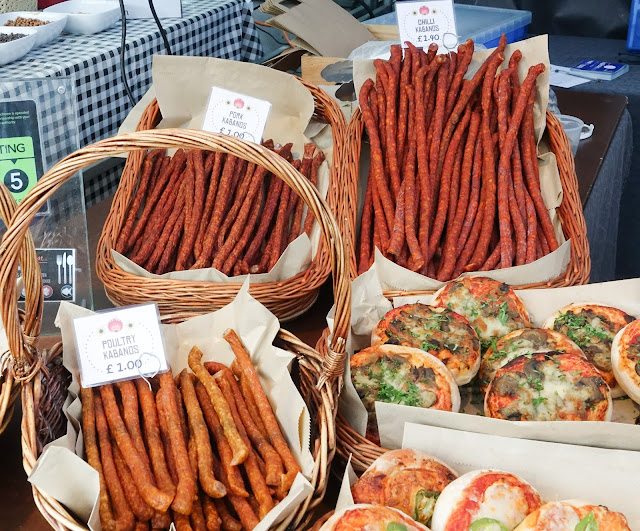Polish Street Food in London Seen at Kings Cross Market
Polish Street Food in London Seen at Kings Cross Market
Kabanos /ˌkəˈbænəs/ (plural: kabanosy) is a Polish long thin dry sausage. They are smoky in flavor, and can be soft or very dry in texture depending on freshness. Typically, they are quite long, 60 cm (24 in) but very thin, with a diameter of around 1 cm (0.39 in), and folded in two, giving them a characteristic appearance.
The name comes from the word kaban, an old term used in Eastern Poland for a young male pig fattened with potatoes specially for making this kind of sausage (hence kabanos - "made of kaban"). The word kaban with a similar meaning is also present in other Slavic languages, e.g. it denotes a boar in Russian and Ukrainian. It was loaned into Slavic from Turkic languages.
Kabanosy are known to have been produced since medieval times at least and because of their long-lasting capabilities they were considered perfect food for soldiers and travellers, which is reflected by kabanos' design traits: thinness, usually very extended length, and shape in which they are always kept. According to some historians, they were hung around neck (like a necklace), allowing any horse-mounted riders to eat on the go without stopping for food break. For the same reasons they were also used as hiking food and very common among Polish Highlanders. Tighter, smaller wraps of long kabanosy- as sold nowadays - were also common among foot soldiers (and travellers). Smaller kabanos wrapping allowed it to be "worn" on a wrist and eaten while marching.
Although nowadays only pepper is used for spicing and the kabanos-making recipe is the same throughout modern Poland, it is so only since the beginnings of the Second Polish Republic (circa 1920). Before the 20th Century various spices were being used in the production of kabanosy, giving them locally-distinct tastes, which differed between various regions of Poland.
Please see also my YouTube channel:







Comments
Post a Comment